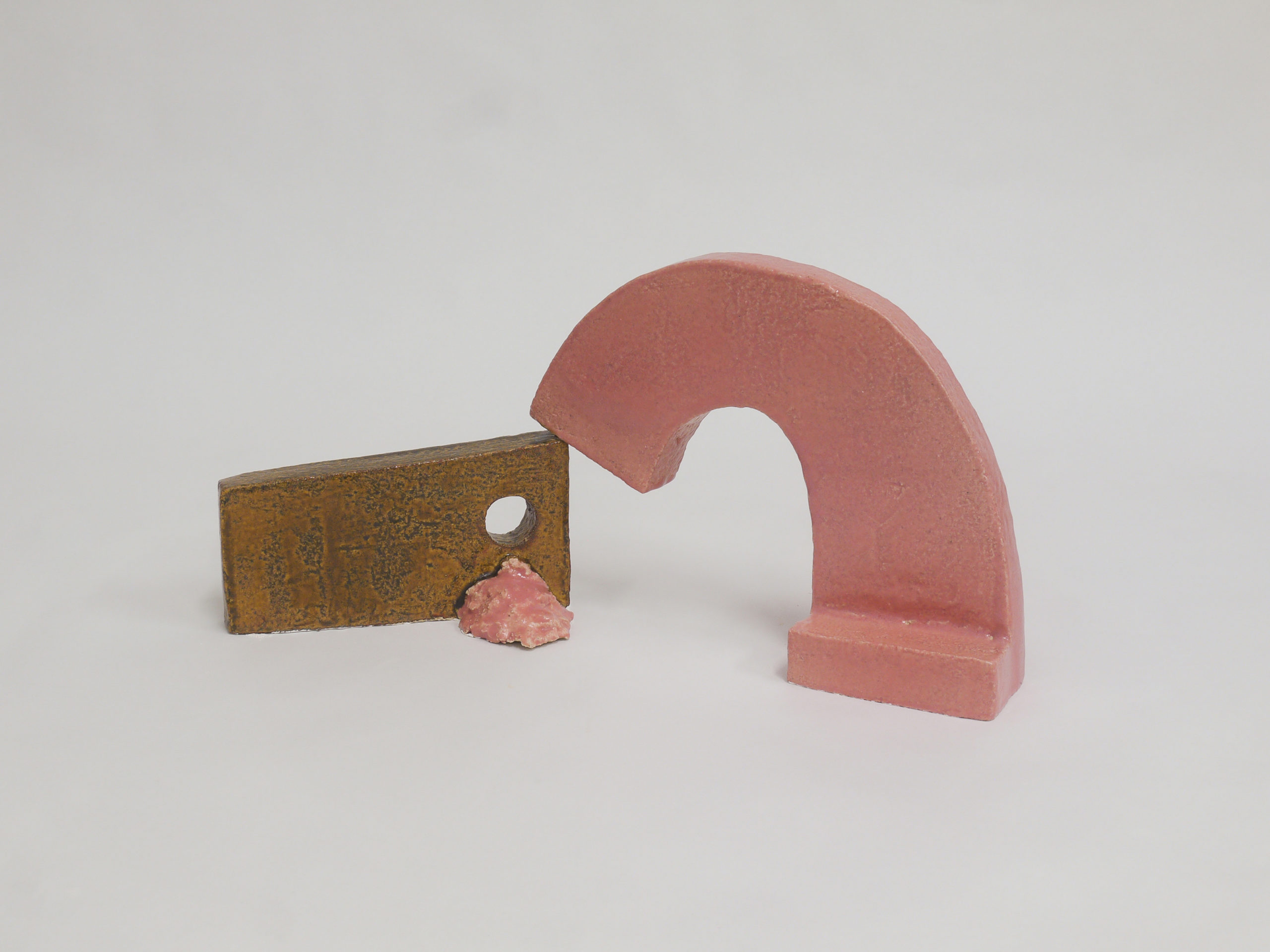
Imago Super Praxis – Samir Mougas
Imago Super Praxis – Samir Mougas
After .TECHNO in 2017, Galerie Eric Mouchet presents Imago Super Praxis, Samir Mougas’ new personal exhibition. Samir Mougas discovered the manufacture of ceramics in 2018 and explored this medium widely since then, notably during a residency at the JamFactory in Adelaide (South Australia) in 2019. In his work, ceramics is the subject of technical and formal experiments (molding, casting, glazing, etc.) and he creates forms that are either free or inspired by his preparatory drawings. The three sets of works he shows in Imago Super Praxis bear witness to his demeanor, both calm and restless. In his work, he tinkers with forms and references, drawing as much on the great names of art history as on the phenomena of cultural niches.
Anne-Lou Vicente: What kind of forms do you make in ceramics and how do you go about it?
Samir Mougas: Right now I’m working on three series of sculptures based on several different types of forms: free forms; forms derived from my sketches; and shoes – actually sneakers to be precise. I started off with a pair of my own sneakers. It’s constructed from the inside out. I begin with a mold that I use to make a kind of slipper like the ones used in diving, and then I apply layers of material using the clay-coil technique. This is completely different to the turning method and involves su-per-imposing “blobs” of clay from the bottom up, making it not all that different to the additive synthesis principle you have in 3D design and printing, with gravity as an added element. Basically I make slabs of clay and then cut them out and fix the shape and proportions. I put a support in the back of the shoe, then a shell piece at the front, a tongue on top, and so forth. That’s how I gradually build up the sneakers, and some of them do of course the front, a tongue on top, and so forth. That’s how I gradually build up the sneakers, and some of them do of course go wrong. I’m still very much experimenting with it all. In other words, I’m just getting to the stage where I can call this technique a medium in the sense that it now allows me to convey my own plastic language.
Anne-Lou Vicente: The sneaker as the ultimate extension of a hip individual’s body has very clear fetish object con-notations to it: the sneaker is now a cult, cultural, historical and even political object.
Samir Mougas : Any design has an underlying aesthetic intention to it, and that intention in turn has a political in-tention. When you think about it, the magic formula for the sneaker is actually quite straightfor-ward. It’s just a few dozen grams of plastic granules injected into a mould to make a product that conveys a huge number of stylistic characteristics that correspond to the tastes of a time or in-dicate a certain lifestyle. A value is then placed on it to to maximise the financial return.
Each model of sneakers is connotated to a specific life aesthetic that most of the time is pretty alien to the person buying them. It’s a classic case of ornamentation, and in that sense it’s quite close to what you see in the animal kingdom: courtship rituals and the intimidation, defence and protec-tion strategies of insects, amphibians and other classes of species. The purpose of the object is to project an image that is not characteristic of the individual projecting it.
For me, the cheap plastic hub caps you find lying on the side of the road fulfil exactly the same purpose: each indi-vidual design refers to a specific style and a specific socio-cultural class. I started out doing hub caps as a way to ease myself into ceramics, and recently I started making them again alongside sneakers. Similarly to how they’re made in factories, I use the technique of moulding and make around twenty copies from each mould. I use them as large test surfaces for trying out different enamels, which also allows me to remove these objects from their highly constrained design frame of reference to a much more fantastical plane.
(…)
Extract of Samir Mougas’ interview by Anne Lou Vicente
Category:
Exhibitions
Samir Mougas, Human experience : blueprints for next police II, 2020. Céramique émaillée.

Samir Mougas, Nose pointe – 2020 Céramique émaillée.

Samir Mougas, Slab rose – 2020 Céramique émaillée.

Samir Mougas, Human experience : blueprints for next police I, 2020. Céramique émaillée.

Samir Mougas, Marty was a hoon (I II et III) – 2019 Céramique émaillée.


